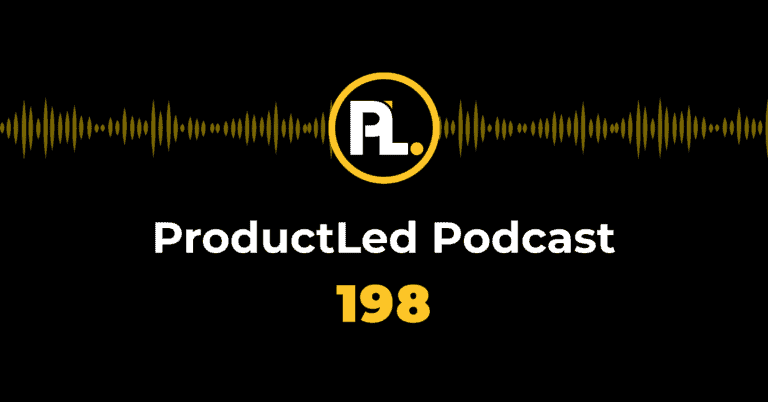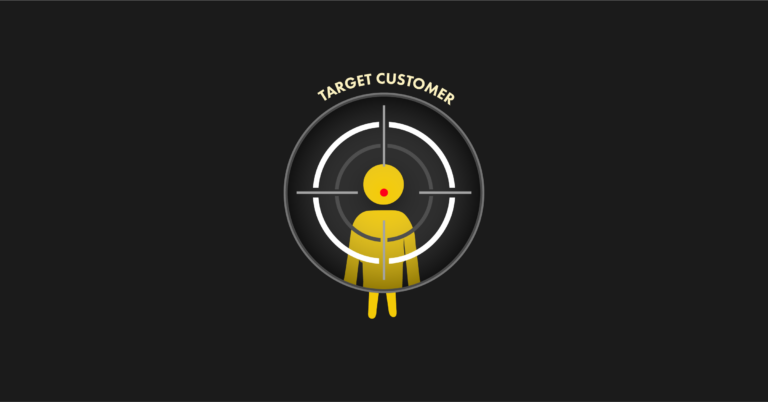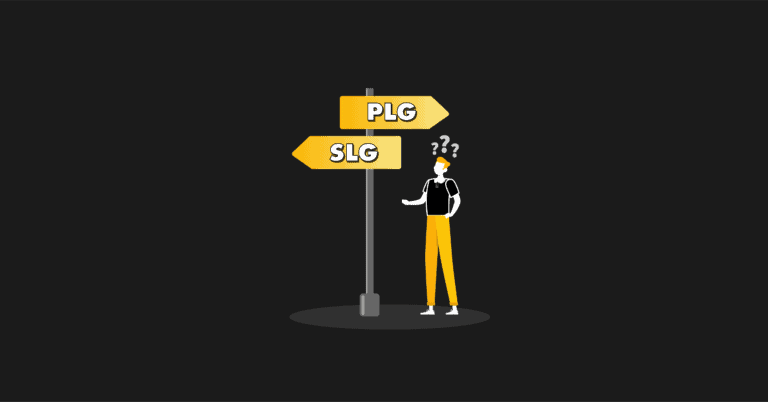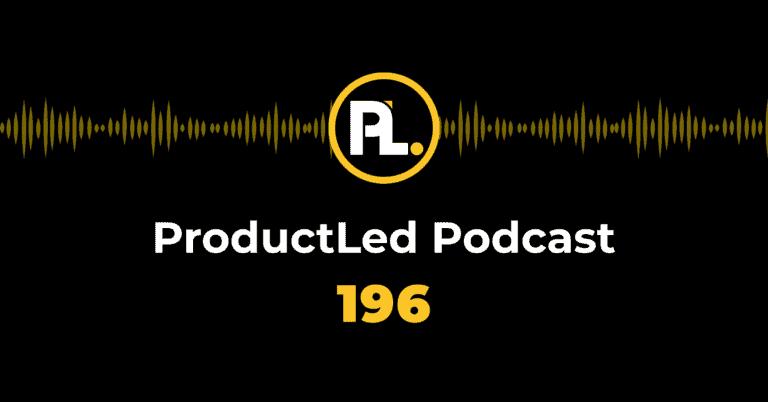The Product-Led Benchmarks 2022 report found that most B2B SaaS companies have already deployed product-led growth (PLG) motion, and 91% of them plan to invest more in PLG initiatives this year.
Several enterprises understand the benefits of putting their product first. Still, they are unsure what a product-led model looks like within their top-down enterprise sales model or what PLG marketing initiatives to implement.
In this article, you’ll get advice for gathering product signals to capitalize on an enterprise marketing strategy, its cross-functionality, and what a product-led sales motion means.
What Is Product-Led Growth Like in Enterprise SaaS Companies?
A self-serve product experience is the underlying element of an enterprise company doing a product-led growth strategy. The strategy demands collaboration between the Product, Engineering, Marketing, and Sales teams to improve the value of a product and acquire and retain users.
Product messaging evolves in traditional top-down enterprise sales. However, this isn’t the case for product-led enterprises, which need a precise positioning and messaging strategy before launching their product.
Sales-led enterprises cannot make the transition to product-led growth overnight. There are several challenges to overcome, such as:
- Communicating the benefits of PLG, especially to the Sales team.
- Getting buy-in from the entire company. After all, PLG is a whole company strategy.
- Figuring out a pricing model. Alongside a freemium version, how can you market the value and benefits of paying for premium features?
Product-Led Growth Versus the Freemium Model
Several SaaS companies integrate a Freemium or Free Trial element into the PLG strategy.
However, PLG is not just about integrating a Freemium model – when a company offers basic product features at no cost and charges for advanced ones.
Great products are the foundation of good marketing. Product-led marketing takes this to heart, providing prospects with the opportunity to experience value through free trials and freemium products. Doing so decreases the churn rate for SaaS companies.
Marketing in PLG doesn’t try to make up for shoddy products. Instead, products sell themselves. Users have spent time with SaaS products and pay for what they expect, which is crucial for business growth.
How Enterprise SaaS Marketing Can Tie in With a PLG Go-To-Market Approach
More enterprise marketers need to embrace product-led marketing.
Common objections to not trying a PLG go-to-market approach include:
- My product is too complex.
- We don't have the internal resources.
- We sell to a big buying committee.
Enterprises, however, benefit from looking at their product as another performing channel, especially in the middle and bottom of the funnel content.
Marketing qualified leads (MQLs) are potential customers engaged with content marketing and passed to the Sales team. A product-led model can generate MQL for enterprises too. For example, prospects that sign up for a free trial or demo have given sufficient usability signals that sales can sell to them.
PLG models offer tools to market complex products in an enterprise ecosystem that capitalize on different product channels. For example, around 62% of companies have tech tags for marketing automation platforms (with an email focus).
How to Get and Track Signals of Product Growth Marketing
Look at traditionally customer success (CS) oriented data for product growth marketing signals.
Here are three general steps:
1. Look at how people use your product.
Get started by asking questions about user behavior. How are they using your platform? Which sections are they using, and how long?
2. Use CS tools to track user experience.
CS tools and software track engagement, product usage, customer profiling, etc.
By monitoring user experience, your SaaS company can identify churn risk, friction points in onboarding, users requiring more assistance for adopting your product, and additional areas of weakness.
3. Assign a marketing grade.
Using the CS data, assign a marketing grade to prospects. Then, send quality leads to sales, and improve pre-sale issues on your platform based on the behavior of lower-grade leads.
How Product-Led Marketing Works Within PLG Sales Motion
Product-led marketing is where product, sales, and marketing all meet. These three teams give input and need to use persona-based experiences and product messaging, which are elements of product marketing.
A company’s primary focus is on its product experience when they want to grow through its product. The main website call-to-action (CTA) is the user’s product login instead of the “download the whitepaper" or "request a demo" buttons. As such, product marketing messaging becomes more crucial to companies.
“Start For Free” is the CTA on ProductLed’s mainpage.
Product marketing is brought into the spotlight within a PLG sales motion because it ties in more with revenue. If product messaging is confusing, attracting users to sign up and experience the product will be extremely difficult.
In a way, product-led marketing becomes your product channel’s lead generator.
Gathering Data and Signals From Product-Qualified Leads (PQLs)
PQLs are users who have experienced the value of your product. If users have signed up for a free trial and are happy with the product, they become a PQL and are more likely to become paying consumers.
An enterprise can identify PQLs by asking their product manager and team:
- Do we already gather product signals?
- How are we using those signals?
- Where does the data live, and how do we need to pull that into our marketing automation platform?
Many enterprises already use application programming interfaces (APIs) and customer relationship management (CRM) systems, so they already have methods for tracking product signals. The next step is pulling these signals into marketing to bring them from a product and CS-oriented function into a lead grading function.
When the Sales Team Should Reach Out to PQLs
The best time for the Sales team to reach out to PQLs is different for every product. The timing has to be correct.
Companies going more PLG and less traditional gated content are more likely to encourage users into a product tour without requiring their email. However, this scenario changes when you consider passing PQLs to Sales.
How do you determine the signals that make up a PQL??
You need to try to find behaviors that correlate with people upgrading. This might seem complicated since you’re constantly changing features. To nail down the ideal definition of a PQL, you need to know your value metrics (and you can learn more about them here).
How to Apply Product-Led to Companies That Are Sales-Led
Sales is accustomed to an established flow where they generate leads and get demo requests. Introducing PLG into a top-down enterprise is understandably challenging for a Sales team because "now what?" is scary.
Here’s advice for helping move from a sales-led to a product-led company:
Talk Internally to Make PLG a Company Reality.
PLG is a cross-functional strategy that demands good communication between all departments. Several aspects go into product success: the Engineering team builds, the Product team brainstorms, CS supports, and Sales and Marketing promotes.
Take Baby Steps.
Introducing PLG within your enterprise involves trial and error, so take baby steps.
Start by launching a product demo on your website. Once a user logs in, you can harvest that email address, whether that is during the pre-product tour, post-product tour, or when they sign up for the demo. Your Sales team can tag users as PQLs after they move through the steps of filling out standard fields in Salesforce from your marketing automation system to log in.
PQLs almost always outperform MQLs.
Get Started With Product-Led Growth Strategy
Product-led companies funnel team effort to build users the best SaaS product possible. Ultimately, the product sells itself and generates high-value PQL for a winning marketing strategy. You can continue learning about the benefits of PLG strategy by taking ProductLed’s free Product-Led Growth Fundamentals course.









